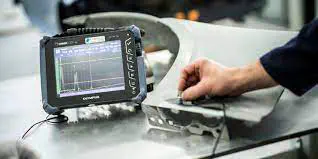Ultrasonic AI

The “Ultrasonic AI” project is a sophisticated endeavor in the field of military aviation, specifically targeting the detection of defects in jet engines using ultrasound imaging. This project encompasses several critical aspects and methodologies:
- Diverse Input Data Analysis: The project involves handling and interpreting various forms of input data, likely encompassing a range of ultrasound images that depict different parts of jet engines. This requires a deep understanding of both the data and the underlying physical structures and potential failure modes of jet engines.
- Preprocessing Different Modalities: Given the complexity of ultrasound data, preprocessing is crucial. This step may include noise reduction, normalization, and enhancement of image features to make the subsequent analysis more effective. The different modalities refer to various types of data or image formats that ultrasound technology can produce, each requiring its unique preprocessing technique.
- Anomaly Detection: A core component of the project is the identification of anomalies in ultrasound images that could indicate defects in the jet engines. This involves distinguishing between normal and abnormal patterns, which is challenging due to the subtle nature of some defects.
- Self-supervised Learning: Implementing self-supervised learning techniques allows the AI system to learn from the data itself without the need for extensive labeled datasets. This is particularly valuable in a military context where labeled data might be limited due to the uniqueness and confidentiality of the equipment.
- Transfer Learning in Machine Vision: The project also applies transfer learning, where a model developed for one task is repurposed on a second, related task. In this case, it could involve using pre-trained models on general image recognition tasks and then adapting them to the specific needs of ultrasound image analysis for jet engine inspection.
- Military Application: Given its military application, the project likely has stringent requirements for accuracy, reliability, and robustness. Detecting even minor defects accurately can be crucial for ensuring the safety and performance of military aircraft.
Overall, the “Ultrasonic AI” project represents a high-stakes, technically demanding initiative that combines advanced image processing, machine learning techniques, and domain-specific knowledge to improve the maintenance and safety of military jet engines.